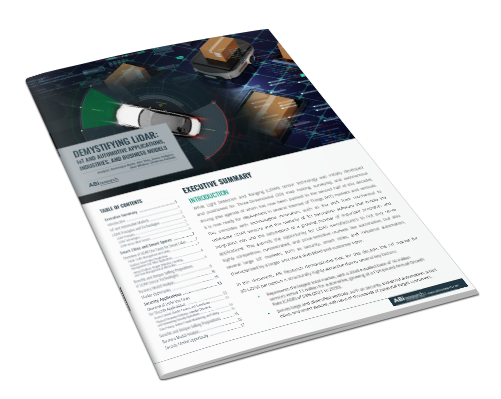While Light Detection and Ranging (LiDAR) sensor technology was initially developed and positioned for Three-Dimensional (3D) map making, surveying, and autonomous driving (the agenda of which has now been pushed to the second half of this decade), it is now ready for deployment in several Internet of Things (IoT) markets and verticals.
This coincides with technological innovation, such as the shift from mechanical to
solid-state LiDAR sensors and the maturity of 3D perception software that enable the integration into and the automation of a growing number of important processes and applications. This extends the opportunity for LiDAR manufacturers to not only serve highly competitive, concentrated, and price-sensitive markets like automotive, but also several large IoT markets, such as security, smart cities, and industrial automation characterized by a larger and more diversified end-customer base.
In this whitepaper, ABI Research explores:
- The benefits and unique selling propositions of LiDAR sensor technologies
- LiDAR use cases for security applications, smart cities and smart spaces, industrial automation, and automotive
- How LiDAR compares to other sensors
- The current landscape and market opportunity for LiDAR
- And more

